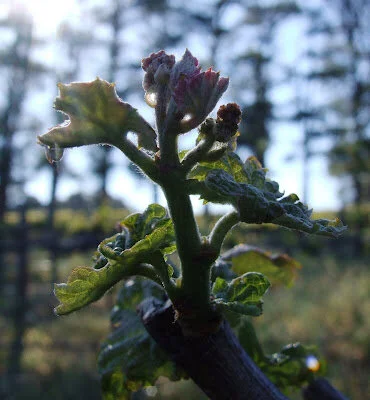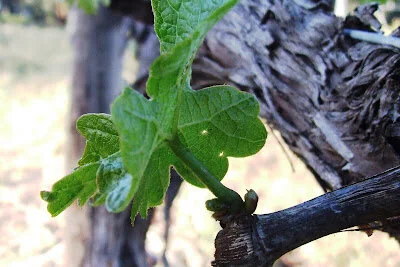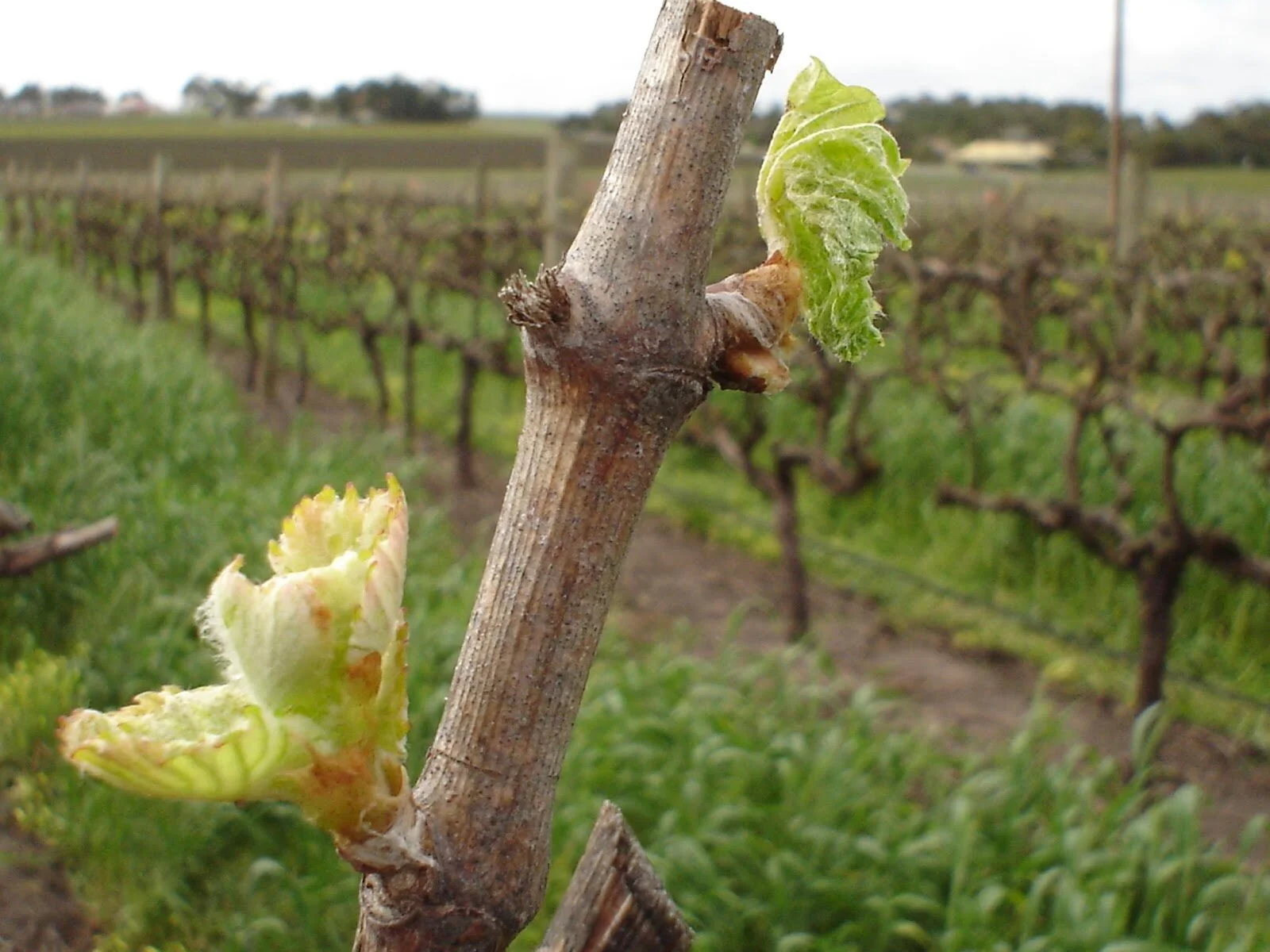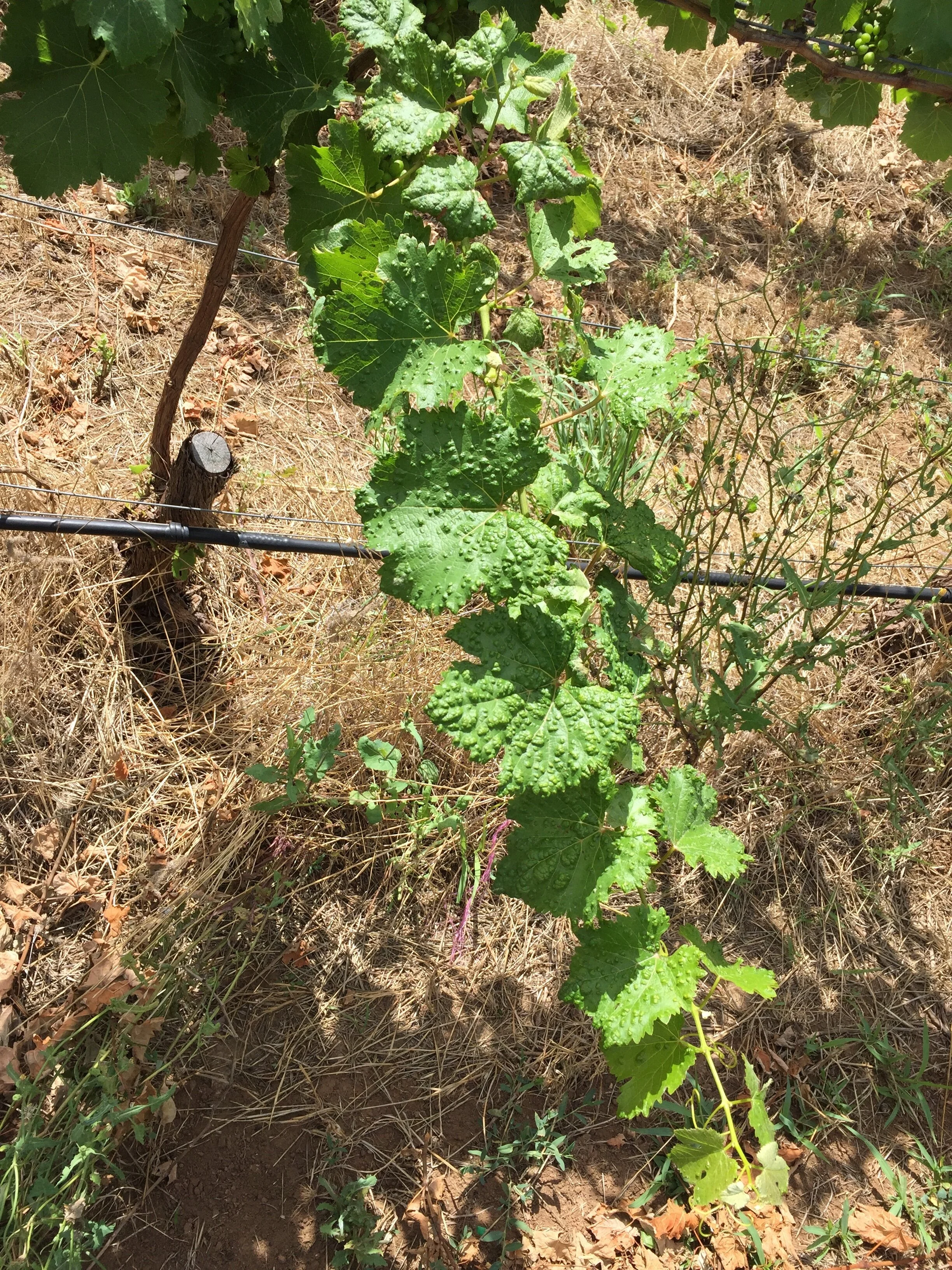Olive Tissue Testing - Due late summer /
Leaf tissue analyses provide excellent information to guide a grove’s fertilisation program. Late December through to early February are the months to take olive leaf samples for analyses of the grove’s nutrient status.
Leaf analysis is used to monitor the nutritional status of the trees, evaluate the effectiveness of fertiliser applications and to identify potential nutritional problems before they occur.
Contact Sam Freeman to arrange your samplying (email).
Downy Mildew Strategies: Two different strategies to compare in Vintage 2023. /
Downy Mildew ID Photos /
Our Agronomy team have captured high quality images for you to use to ID downy mildew, caused by Plasmopara viticola.
Primary oilspot showing the back of the leaf. Spring.
Primary downy mildew oilspot - front of leaf. Spring.
A twin downy mildew oilspot. Spring.
Shoot Growth Post Harvest - Is this a problem? /
The importance of the post-harvest period is largely determined by climate, variety, yield, and management prior to harvest. Vines will tolerate a season or two with limited post-harvest irrigation, but productivity will eventually be reduced if this continues over many seasons. In the same vain they are thought to tolerate excessive irrigation and fertiliser for one or two seasons before the vine becomes unbalanced.
Shiraz reshooting from excessive water and fertiliser application post-harvest.
Clearly in the picture below the rate of fertiliser and irrigation has been too high and the vines have re-shot.
For conventional vineyards DJ's also recommend using 'soft' fertiliser products instead of Urea which is straight Nitrogen. DJ's use and recommend specialist post harvest fertiliser liquid blends which contain a combination of Nitrogen, Phosphorous and Potassium.
We recommend this because:
Like carbohydrates, grapevines require a supply of nutrients from stored reserves to support growth in early spring. Nitrogen in the roots and wood follows a similar pattern to carbohydrates and post-harvest applications will influence the nitrogen status of the vine in the following season.
These products are highly soluble.
The role of other nutrient reserves is less well understood, but post-harvest uptake of phosphorus does appear to be important. To a lesser extent, magnesium, calcium and potassium uptake after harvest will also contribute to growth in the following spring. Little is known about the role of other nutrients carried over winter in grapevine tissues.
With all organic options it is best to check with us and your certification body before use!
Stress and safety at harvest /
Harvest by Ben Heide Photography.
Grape vintage is a high of high stress which, allied with other factors like a lack of sleep, places all of our industry at risk of accidents and mental health issues including depression.
We maintain our vineyards and our machinery to limit the risks of accidents. Like a machine that is working all day and night we also need to maintain our mental health and the health of those around us.
Depression varies from person to person, but there are some common signs and symptoms. Keep in mind the pressures that yourself, your family and your friends are under, it is natural for our mental health to suffer, there is no shame or blame it that.
Look for changes in behavior. Is someone you know not themselves lately?
It's not always easy to help someone who may be experiencing depression. It can be hard to know what to say or do.
When you feel concern for a friend you think may be depressed, encourage them gently to talk about how they feel. Listen patiently: sometimes, when somebody needs to talk, they might not seek advice, but just feel like talking it through. Sometimes they may be vague about their concerns.
Pic by Ben Heide Photography.
Gentle open-ended questions like "So tell me about...?", open the door for an answer bigger than 'yes' or 'no'. This is often a good way to start a conversation. If conversation becomes difficult or your friend gets angry, stay calm, be firm, fair and consistent and don't lose control.
Simply spending time with a depressed friend lets them know someone cares and understands them. Encourage them to seek professional help from their family doctor or at least get online and look at information themselves.
As an industry, a community, and as individuals, we need to 'walk the walk.' Actions speak louder than words. So please look after your mates. Make a call. Go visit.
Website – Beyond Blue Website: The national depression initiative.
Hotline - 1300 22 46 36
Grapevine Scale Monitoring Information /
Mid August: In the vineyard vines are beginning to break dormancy. At this point one of the vine pests reported is Grapevine Scale - pictured below.
Reports have been that scales have been seen in high numbers where they have been seen in previous years.
Cabernet Sauvignon, which has a tough bark, seems to help protect Vine Scale allowing their numbers to build up.
Vine Scale are commonly found in ‘hotspots’ generally in older vineyards.
Vine scales produce a number of eggs over several days. The eggs are laid under the cover of the adult "scales" which offer protection during development - right. The adult dies once it has laid its eggs. Eggs hatch into "crawlers", which are tiny legged creatures which settle down and become an immobile scale.
DJ's recommend using specialised pesticide oils as an initial option because of issues with insecticides affecting other insects including predators- bottom.
Ask us for specific rates and other information.
The scale insects' waxy covering makes them quite resistant to insecticides, which are only effective against the juvenile crawler stage. However, scales can be controlled through biological control by beneficial insects. Many wasp species lay eggs through the scales shell.
Table - Options for the control of scale (black IPM compatible, blue text IPM transition, not recomcmended in IPM vineyards). Information produced by http://cesar.org.au/
What mite is that? /
Andrew asks;
I am curious about how to tell the difference between grapevine mites? I have a Uni project to do on pest and disease and this would be of assistance.
Many thanks.
A= Mites are tiny, about 1/10th of a millimetre long and we generally only become aware of them when their activity causes symptoms on grapevines during the growing season.
There are three common types of mite pest in South Australian vineyards. Grapevine Rust Mite, Grapevine Blister Mite and Grapevine Bud Mite.
Rust Mite affected shoots are common. The photo below is from the Blewitt Springs district of McLaren Vale during mid-spring.
Slow and distorted growth caused by Rust Mite.
Rust mite is seen as shoots with slow and perhaps stunted shoot growth with distorted leaves. It is too late for spraying to be effective this season. Rust mite levels can be reduced by a sulphur (and Canola Oil) spray at Chardonnay 10% budburst.
Bud Mite are found in most vineyards.
Grapevine Bud Mite.
Bud mite damage causes shoot to have no growing tip and only produce one or two crinkled leaves. Bud mites generally don't cause economic damage and levels under 1 per 100 shoots are considered minor. Bud mite cannot be easily controlled by fungicide spraying.
Blister Mite can look severe, but rarely causes mature vines any trouble. Blister mite can be an issue in nurseries though.
Grapevine Blister Mite.




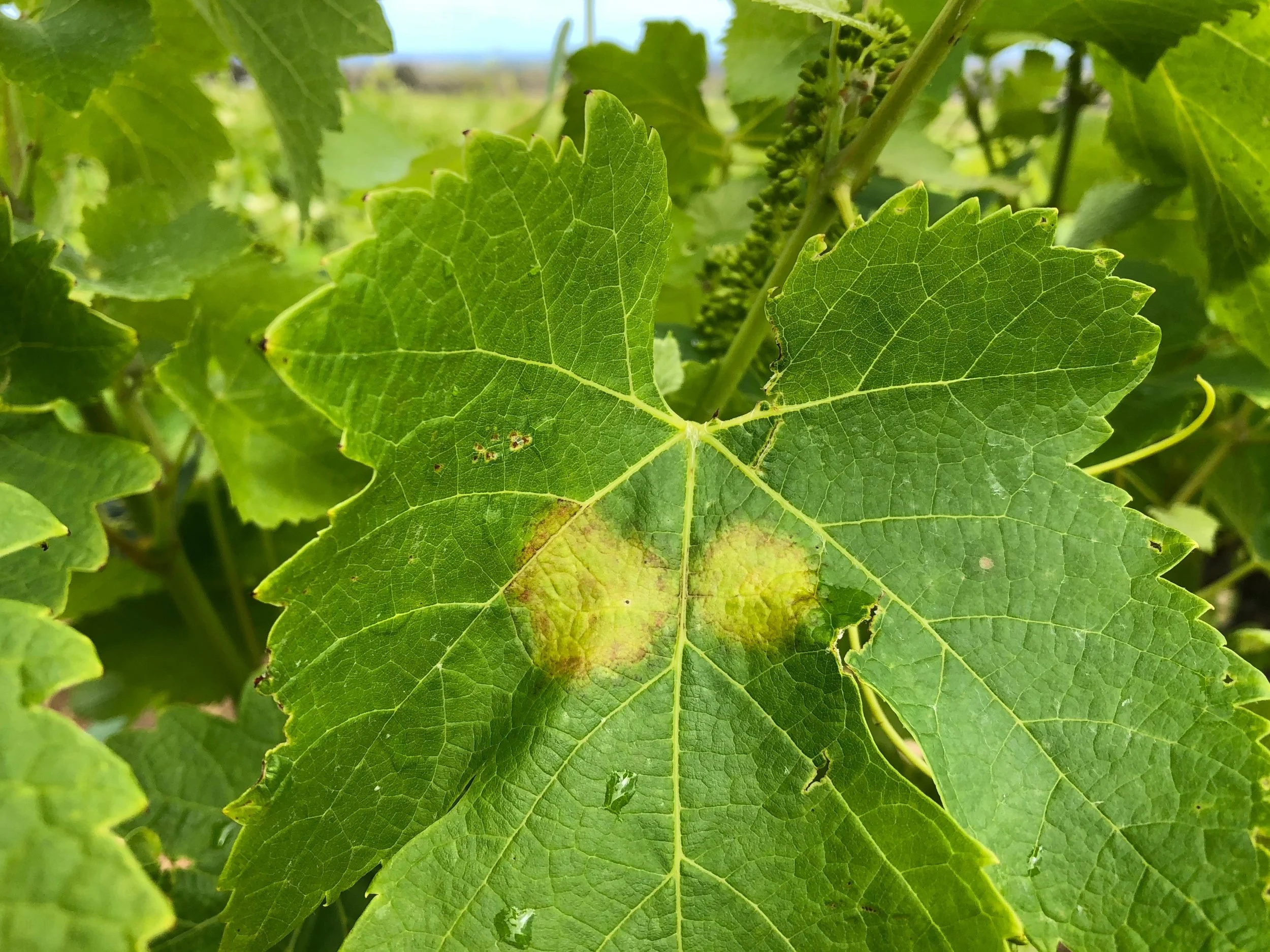
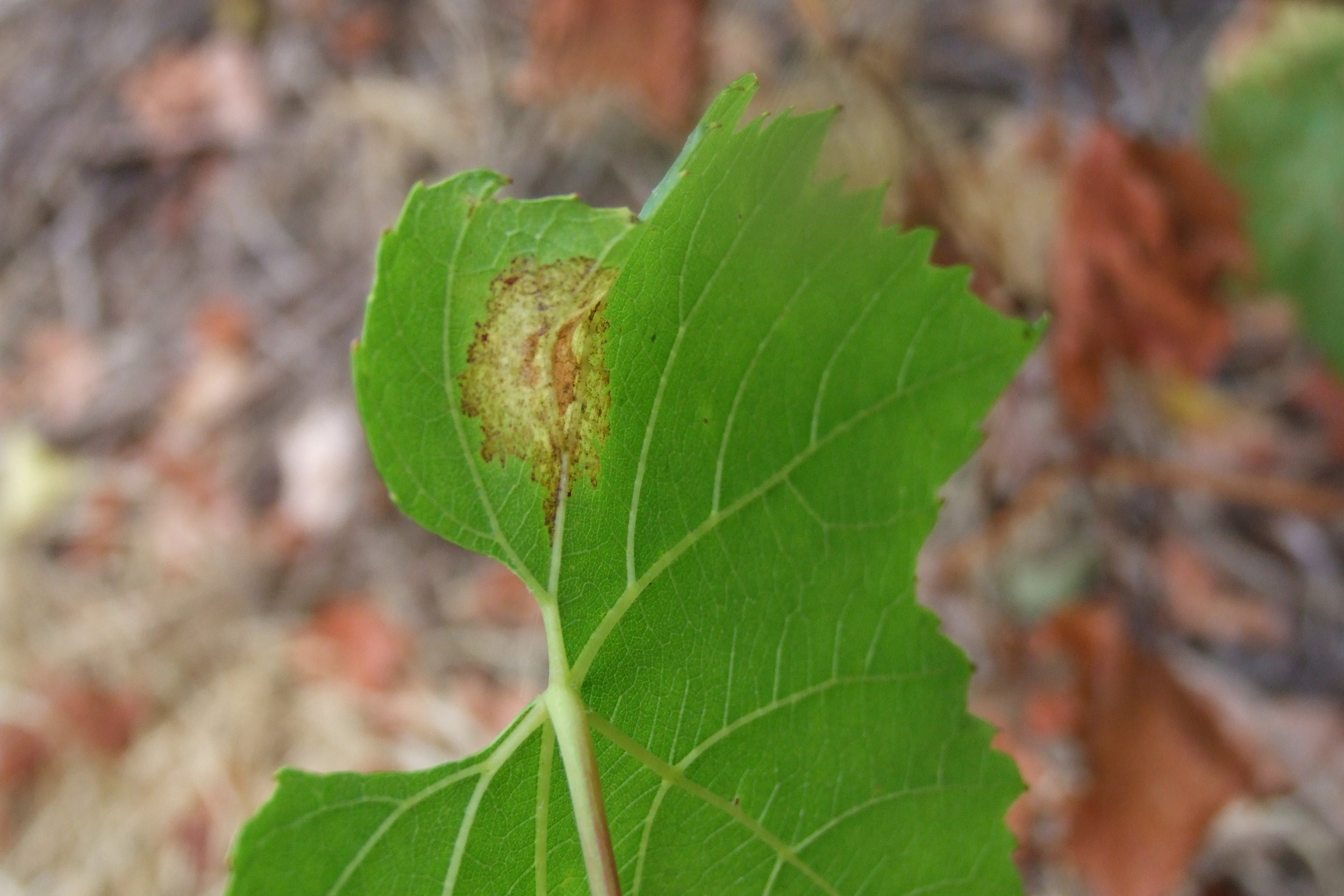
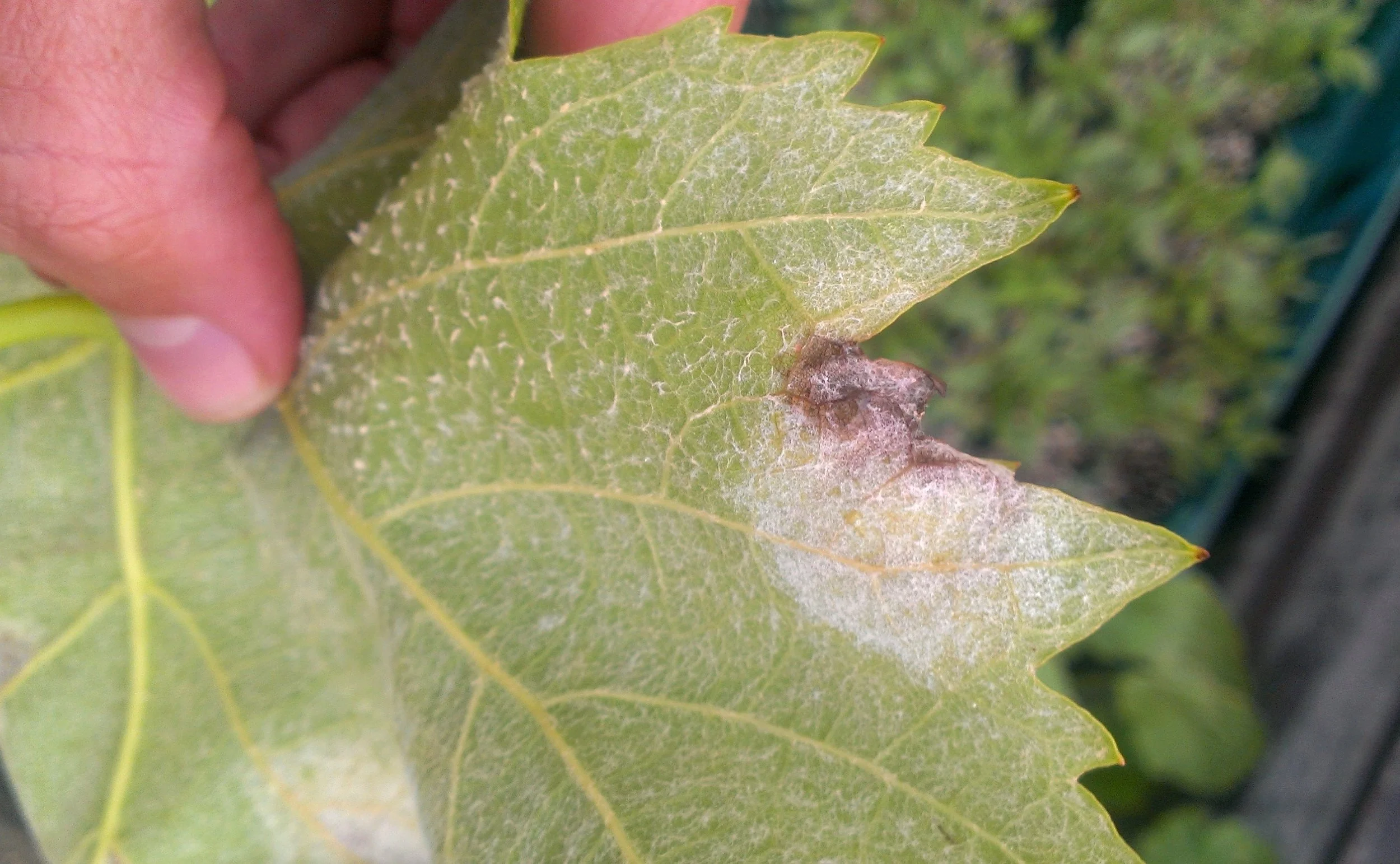
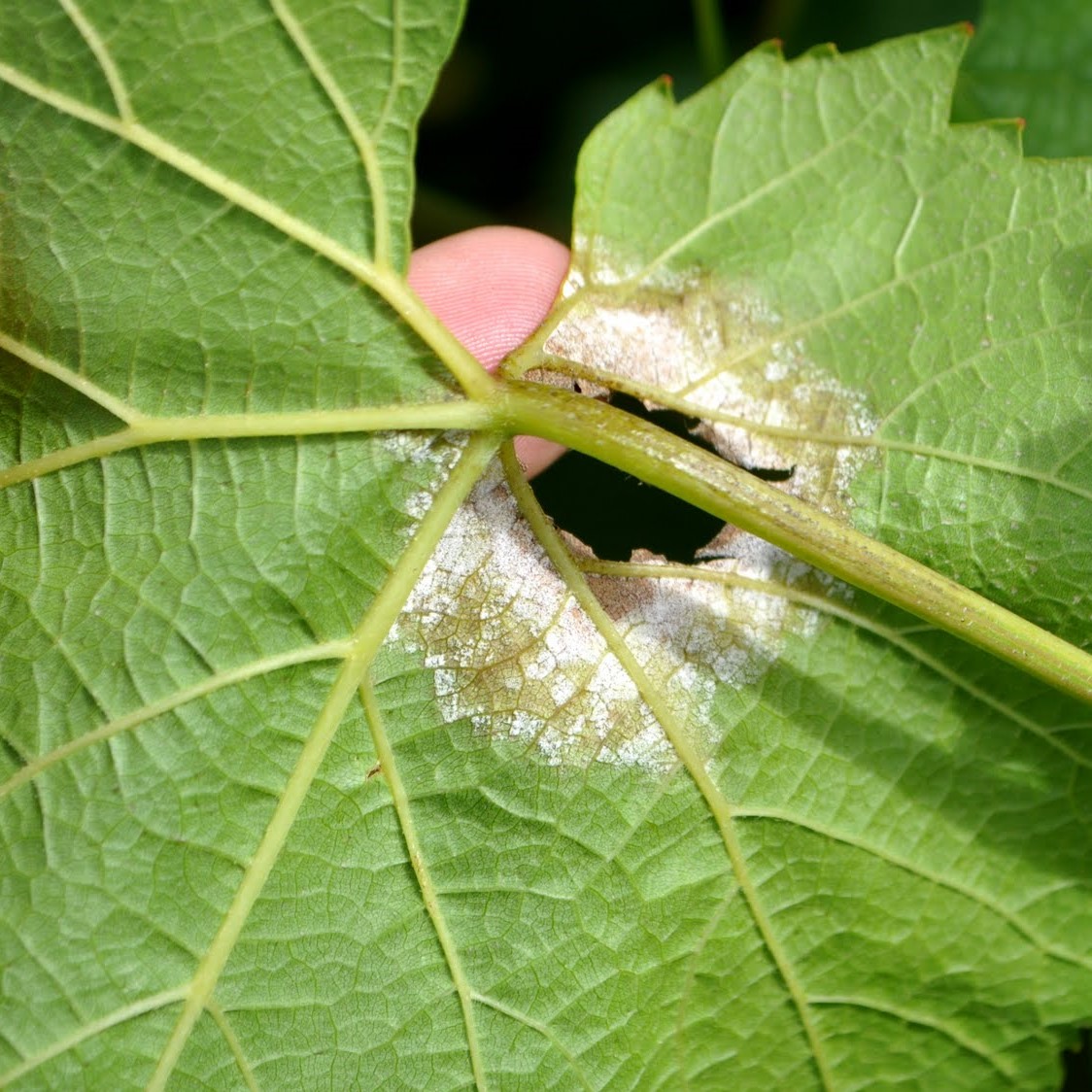
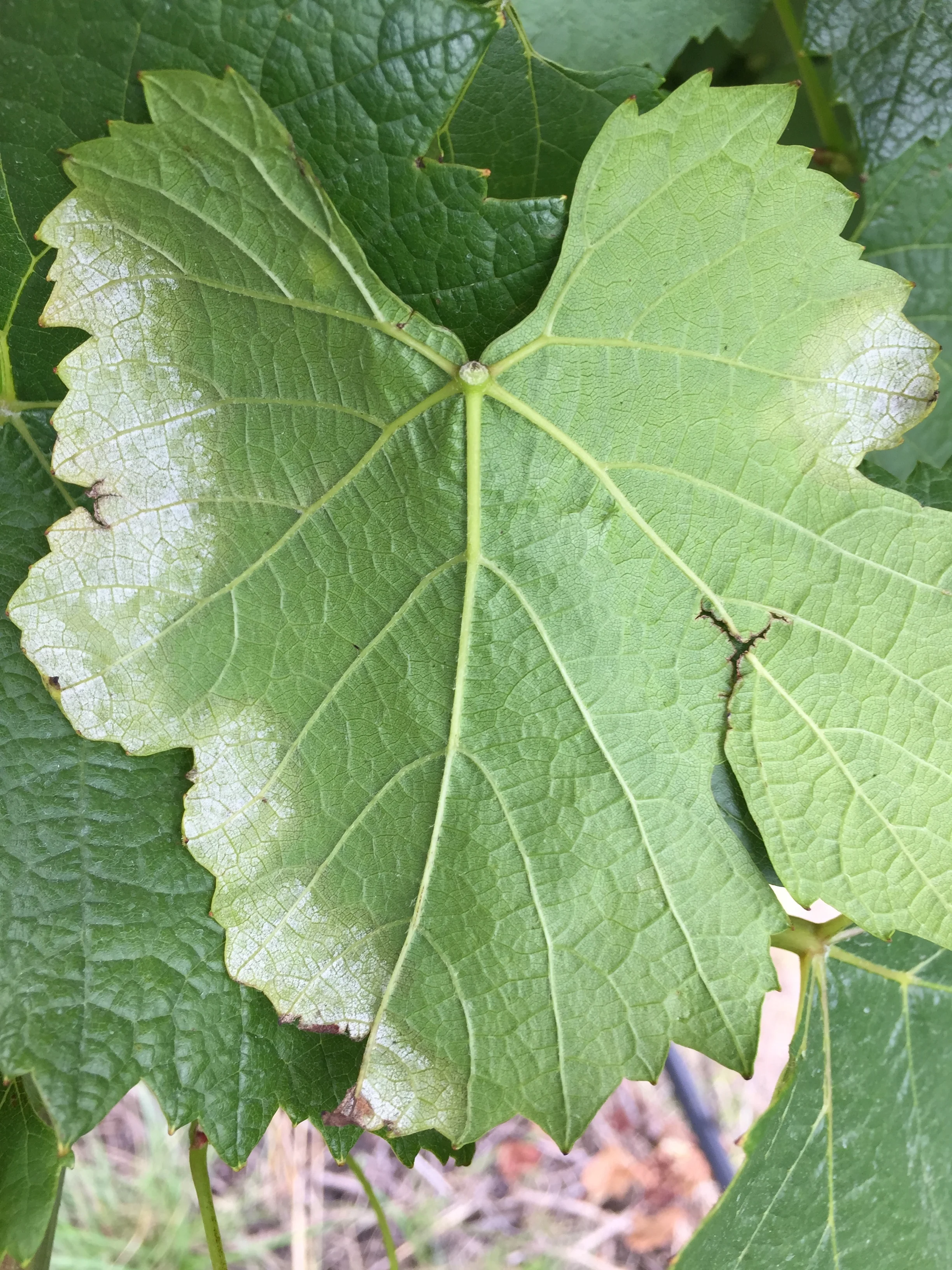
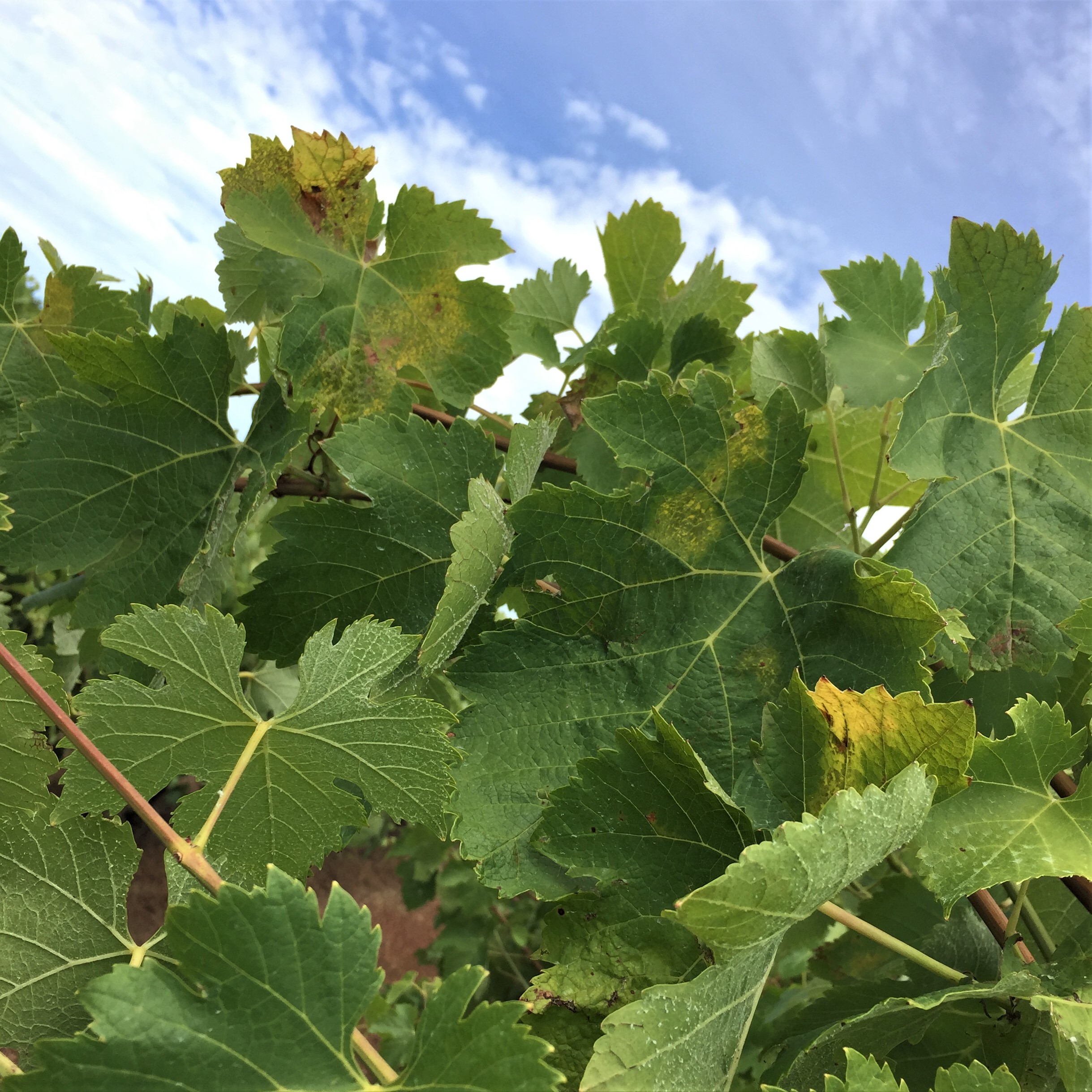
![IMG_2862[9658].JPG](https://images.squarespace-cdn.com/content/v1/5361dcdee4b00858cf8d25ad/1541635562088-MWYM92W6YVXKY9OH0LFL/IMG_2862%5B9658%5D.JPG)
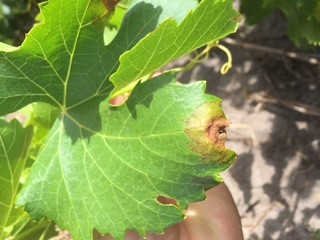
![IMG_2863[9660].JPG](https://images.squarespace-cdn.com/content/v1/5361dcdee4b00858cf8d25ad/1541635884289-DKWOYXBUZY7BEFKBAZUX/IMG_2863%5B9660%5D.JPG)






